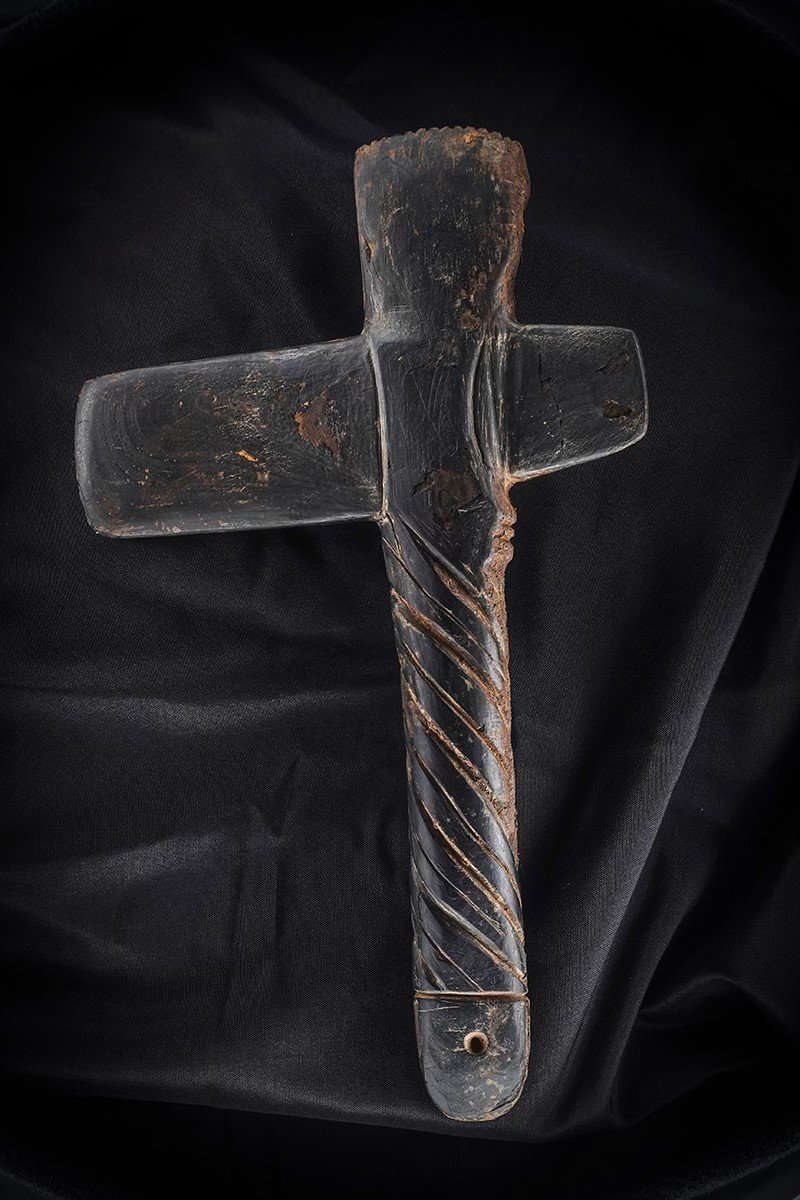Monolithic Axe
This monolithic axe was found in Tennessee and was carved from one stone.
Recovered along the Mosquito Coast, these axes were kept in the Gothenburg Museum in Germany, according to Steven Loven (Origins of the Tainan Culture, West Indies, first published in Germany in 1924 and republished in 2010). According to Loven, the idea of the axe as a solid stone form should take precedence over the shapes of the axe, which are established by the different blade forms and hafting techniques of individuals who manufactured it. He continued his talk by bringing up a rather sizeable monolithic axe found in Guadeloupe. Its shape, which included a head, a narrowing handle, and a knob at the handle's butt to prevent slipping from the hand, allowed researchers to trace the axe's origin to one of the Tainan Islands. These characteristics matched every monolithic axis in Tainan Island and the Lesser Antilles. Loven saw two items brought back from Santa Domingo as spatulas rather than inflexible axes. Recovered from the island locations, additional monolithic items with a similar spatula pattern were also classified as "war clubs" rather than monolithic axes.
Loven thought the symbols had a common origin with the Columbia coast and that a communication line had been built among the inhabitants of the Southeastern United States, Santa Marta, the Tainan Islands of the Lesser Antilles, and the Mosquito Coast. The absence of these axes from Mexico and the upper Columbian cultures points to a Southeast Asian origin for these societies, which migrated through the Lesser Antilles and down the coast to Columbia.
Dr. Joseph Jones excavated the earliest known monolithic axe from the East Tennessee Mounds in 1869. This axe was found near Nashville, Tennessee, on a mound on the eastern side of the Cumberland River. The specimen is 13 3/8 inches in length, or five ¾ inches in celt length, and is composed of green chlorite, also known as greenstone. This axe was found beneath the male body's skull during a burial. The grave was close to the altar on the mound's southern slope. The handle tapers to a square at the top, and each side has three carved grooves that extend halfway down toward the celt. The Heye Foundation Museum of the American Indian in New York is the custodian of the axe.
If you want to see this axe for yourself, visit our Bentonville Museum!
Works Cited
Administrator. “Monolithic-Axes.” Monolithic-Axes, peachstatearchaeologicalsociety.org/index.php/9-hardstone/300-monolithic-axes.
Credit to Olivia Lee

